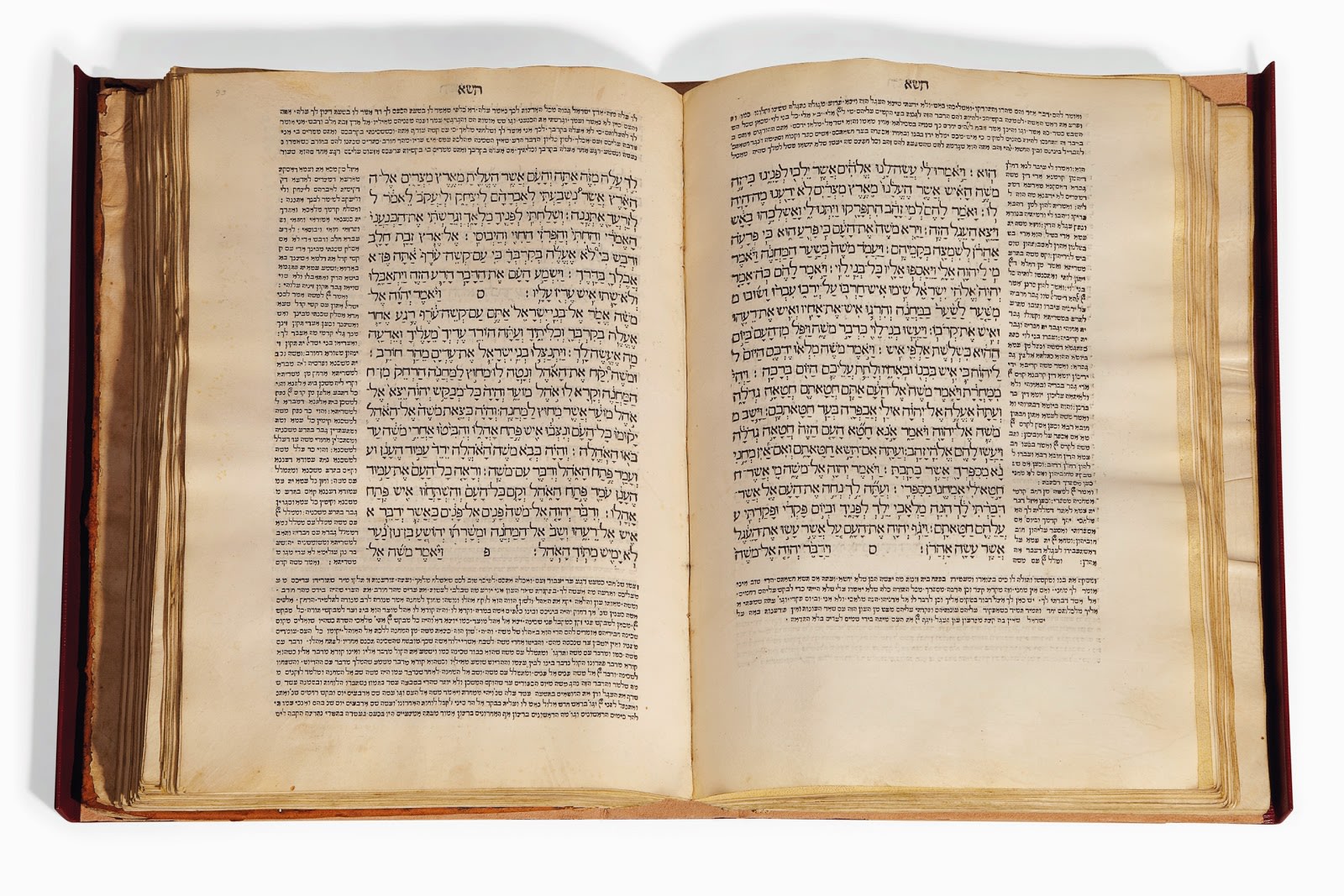“Rav Huna bar Yehuda said in the name of Rebbe Ami: A person should complete the portion together with the community, twice Scripture and once targum, and even ‘Atarot and Dibon’ [proper names], for anyone who completes the portion with the community, his days and years are lengthened” (Berakhot 8a). This is also the ruling of the Shulchan Aruch (OC 285:1), who also permits reading Rashi’s commentary.
The Maharal likens these three readings to the three times the Torah was reviewed to Israel in the desert: once at Mount Sinai, once in the Tent of Meeting, and once in Moav. (See Rashbam Shemot 12:1.) In Moav, we learn that Moshe “explained the Torah” (Devarim 1:5); Rashi explains that he explained it in seventy languages. So the third time the Torah was given, it was given in all the languages of the nations.
The Maharal explains that these three readings correspond to three “worlds”, or levels of holiness. We might think that the Targum would be the lowest of the three worlds, but actually, writes the Maharal, it is the highest. The reason is that the Targum (Aramaic) is not just one language among the languages of the nations;it is a unique pan-human language. He brings several proofs for this claim:
The Maharal writes that the Targum “isn’t considered a language”. (I can’t find the source for this statement.)
The gemara states that the angels don’t understand Aramaic (Shabbat 12b and elsewhere); this is because it is a language unique to the level of mankind as a whole, who are above the angels in respect of free will and reward and punishment.
The Maharal also points out that the Talmud is written in Aramaic, because it relates to a higher level of Torah understanding than the Mishna.
The translation of the Torah into Aramaic testifies to the fact that the Torah is relevant to all of mankind. It is true, writes the Maharal, that the other nations didn’t accept the Torah, but it was offered to them. And non-Jews can still accept the Torah by converting; thus, writes the Maharal, the language of Targum is specially connected to converts.
The gemara states that the Targum on the Torah was composed by Onkelos, a convert. (Megila 3a.)
The entire mishnah is in Hebrew. Yet at the very end of chapter 5 of tractate Avot, there are two statements in Aramaic, by Ben Bag Bag and Ben Hei Hei. One old tradition states that these individuals were converts.
In addition, this switch is important because the sixth chapter of Avot is all about the Torah; as we move from the level of midot to Torah, we suddenly have statements in Aramaic which is uniquely relevant to the highest worlds.
So reading the Targum on the portion testifies to the fact that the Torah comes to us from the highest worlds the special level of human striving which is above the level of the angels. This level is inherently relevant to mankind as a whole, as we see from the fact that Aramaic is a pan-human language. All nations have a potential connection to Torah, but since they declined to accept the Torah at the time it was given, their main connection is through conversion, and indeed converts seem to have a special affinity for this language.
Based on Maharal Netivot Olam Netiv HaAvoda 11, 13, Derech Chaim 5.
Rabbi Asher Meir is the author of the book Meaning in Mitzvot, distributed by Feldheim. The book provides insights into the inner meaning of our daily practices, following the order of the 221 chapters of the Kitzur Shulchan Aruch.
The words of this author reflect his/her own opinions and do not necessarily represent the official position of the Orthodox Union.

